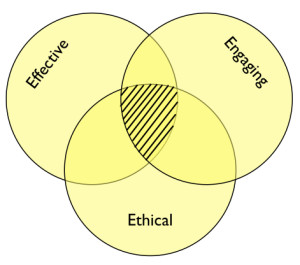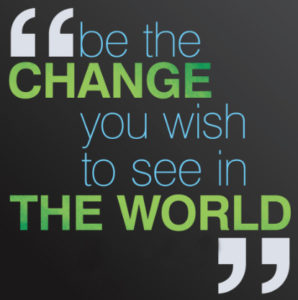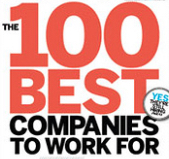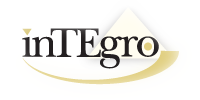The first definition of “integrity” in Webster’s New World Dictionary is “the quality of being complete; unbroken condition; wholeness; entirety.” In that context leading change with integrity implies adoption of the broadest possible lens evaluating the merits of change initiatives. In their book by the same name, Harvard’s Howard Gardner and Mihaly Csikszentmihalyi (author of Flow) defined “Good Work” as effective, engaging and ethical. Applying such a “triple-E” framework is a good start adopting a more holistic perspective evaluating change efforts.
Most of us have significant experience participating in or  perhaps leading change initiatives to improve organizational effectiveness; “lean” management and the “reengineering” craze of the ‘90’s are examples. Leading with integrity and adopting a more holistic perspective requires attention to not only organizational effectiveness, but at least equivalent attention to the ethical dimensions of change and its effect on worker engagement. Indeed if we are concerned with the sustainability of change and sustainability of our organizations, adoption of a “triple-E” perspective is more than nice-to-have, it’s a must-have. The news media are littered with examples of strategies that failed to give adequate attention to all three “Es” and subsequently backfired or derailed the whole organization; Volkswagen is merely one of the latest.
perhaps leading change initiatives to improve organizational effectiveness; “lean” management and the “reengineering” craze of the ‘90’s are examples. Leading with integrity and adopting a more holistic perspective requires attention to not only organizational effectiveness, but at least equivalent attention to the ethical dimensions of change and its effect on worker engagement. Indeed if we are concerned with the sustainability of change and sustainability of our organizations, adoption of a “triple-E” perspective is more than nice-to-have, it’s a must-have. The news media are littered with examples of strategies that failed to give adequate attention to all three “Es” and subsequently backfired or derailed the whole organization; Volkswagen is merely one of the latest.
Leading change with integrity requires attention to four dimensions:
IDENTITY – an organization’s “3 Ps:” purpose, principles and priorities. We know that a sense of purpose motivates, and that it is among the chief motivators of millennials. Most of us also want to know our organization’s principles or values, what it stands for. At the very least it is essential that change initiatives not violate an organization’s purpose or principles; at best they can be opportunities to reinforce them. In addition to communicating what will change when embarking on a change initiative, it is important to clarify what will not change
My experience as a consultant confirms research findings that on average 60% of an organization’s workforce do not know its strategic goals; we can likely not over communicate the intent and rationale of change initiatives and the third “P,” strategic priorities.
AUTHENTICITY – “Be the change you wish to see . . .” (Mahatma Gandhi) People watch our feet more than they  hear our words; leaders especially must be true their organization’s “3 Ps” and to changes that they advocate. Truth and transparency are “coins of the realm” leading change. Lacking information in times of change, we are prone to fill the gap by making things up; leaders need to fill the gap more intentionally.
hear our words; leaders especially must be true their organization’s “3 Ps” and to changes that they advocate. Truth and transparency are “coins of the realm” leading change. Lacking information in times of change, we are prone to fill the gap by making things up; leaders need to fill the gap more intentionally.
ALIGNMENT – Are hiring, promotional, pay practices and other organizational systems aligned with your “3 Ps” and desired changes? Are mechanisms in place to help the organization and its members grow and adapt to stay aligned with external changes?
ACCOUNTABILITY – Are we measuring what matters? Adopting a holistic or “triple-E” framework means attending equally to measures of worker engagement, organization effectiveness and ethical practices. Applying integrity’s definition of “completeness, wholeness and entirety” to ethical practices calls for a broader interpretation of ethics than is common in business ethics circles. Beyond adherence to laws, regulations and obvious moral codes, leading change with integrity calls for stewardship, a sense of responsibility for the impact of our actions far removed from our immediate realm. We need to adopt more “7th generation thinking” as modeled by indigenous Americans, discerning what impact decisions and actions will potentially have on future generations.
Conscious attention to these four dimensions constitutes a “triple play,” helping assure that we lead change and lead our organizations in a manner that nurtures worker engagement and ethical practices as well as organization effectiveness.
There is evidence that potential workers as well as customers  and communities where businesses operate are seeking more than merely transactions with those institutions. Characteristics of Fortune magazine’s latest “100 Best Companies To Work For” are indications; the rise of B corporations, organized to provide social benefits, is another. If we do not keep pace with the talent and customers we hope to attract, who expect higher levels of organizational integrity, traditional approaches to change and the sustainability of our organizations itself will be in jeapordy.
and communities where businesses operate are seeking more than merely transactions with those institutions. Characteristics of Fortune magazine’s latest “100 Best Companies To Work For” are indications; the rise of B corporations, organized to provide social benefits, is another. If we do not keep pace with the talent and customers we hope to attract, who expect higher levels of organizational integrity, traditional approaches to change and the sustainability of our organizations itself will be in jeapordy.
You can find more examples and strategies for managing change and leading with integrity in Navigating Integrity – Transforming Business As Usual Into Business at its Best
Open your arms to change, but don’t drop your values.
Nepalese proverb
Change your opinions, keep intact your principles; change your leaves, keep intact your roots.
Victor Hugo





